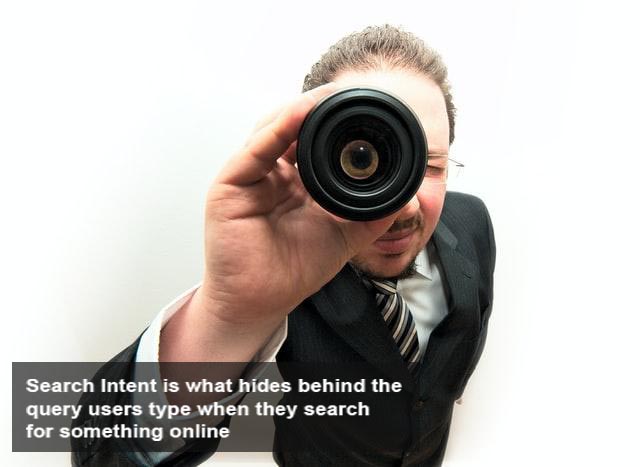If you’re an online marketer, you must be familiar with SEO. It’s been around for years, and it’s been important since the day it arrived. However, keeping up with it is getting more and more difficult. There are always updates that change things from their roots, and keeping track of them alone is a tedious job. On top of all that, these days, there are more smart people in the game. And this means that it’s harder to stand out. So, if you want to reach more potential customers, you have to push the envelope. The best way to do it at the moment is by learning how to use search intent in your strategy.
This is the new kid on the block, but it can help you increase your conversions both via content marketing and SEO. As a matter of fact, if you want to build a successful SEO strategy, you shouldn’t go without it.
What is search intent?
More and more online marketers are focusing on search intent. And it’s safe to say they don’t do that without reasons. Although it won’t necessarily help you get more visitors to your site, all the audience you capture will be the kind you want. Let us explain what we’re on about.
You’ll get people with a specific intent to your site. In essence, you’ll be providing your target audience with the information they need. And best of all is that they’ll find you at the right time. If you learn how to use it effectively, search intent will keep users on your site for longer. And on top of that, it will make it easy to funnel them down into sales or leads. It really works in your favor.
But let’s see how exactly.
The basics
To put it as simply as possible, search intent is what people are trying to find when searching for something online. So, your job is to provide them with the most relevant information based on what they need. We’ll use an example to clear up any confusion.
If a user wants to buy a new phone, they’ll type queries like ”buy smartphone”, or ”buy phones online”. These are called transactional queries since the intent is to buy something. But more on types later.
When people use search engines today, they want to get concise and relevant results right away. And here, we get to the most important thing – relevance.
Google is working on improving search results so that they’re as relevant as they can be. Their users are what’s important to them. And that’s why you need to optimize your pages so that the content satisfies the intent of keywords people use. This is how you’ll get more people who need your products to check out your site.
Understand your customers
To use search intent in your strategy, you need to understand the different types. And in our experience, there are three kinds you need to know about.
- Informational. These are people looking for information. They want to learn how to do something or how something works.
- Transactional. These users want to take some actions. Here, we’re talking about people who want to buy tickets, products or do anything else that involves commercial intent.
- Navigational. These people are looking for a specific website or company. They already know about it, and they’re on the internet to find it.
No matter how big or small your business is, understanding these three types of search intent is essential. We get how you might think that if you’re a small company, it would be enough just to put up a shiny banner or lower your prices to get customers. However, these are only myths about small businesses. You have a higher chance of closing deals if you focus on getting to them at the precise moment they need you, and search intent helps you do just that.
How to use search intent in your content marketing strategy?
If you want to have an effective content marketing strategy, here’s a simple guide for you. Focus on quality content and proper use of keywords with the right intent. The more time you spend optimizing and targeting your content, the better results you’ll get. You’ll be able to convert more traffic into paying customers, and that’s what you want to achieve.
However, keep in mind that this tactic takes a lot of work. You’ll need to optimize and update your blog and site at all times. The reason behind this is simple. Customers want to get relevant and up-to-date information and chances are that the freshest content out there will be the most relevant. At least that’s how Google’s algorithms ”think”.
Using it for crafting CTAs
So, you did what you should and spent a lot of time discovering how users interact with your website. You know how they behave and what they’re looking for online. With that in mind, you optimized your site and managed to capture an audience with the right intent.
And that’s great. Now, you hae people who you can potentially convert into paying customers. But to do that, you need to make a call to action to motivate them.
Luckily, this shouldn’t be a problem, since you already have the right audience. On the other hand, there are some rules that you should follow to optimize for transactional search intent.
So, here are some focus points for your CTAs.
- Make them clear. All your CTAs should be clear, obvious, and eye-catching. You must make them stand out from the rest of the page. However, you also want to make sure that people understand what will happen when they click the button.
- Visual design is vital. Your visitors form their opinion of the page in under a second, and most of those opinions are based on visual design. So, try to get your message across in as few words as you can. Focus on visuals for showing value and benefits.
Make it emotional. People decide to buy driven by their emotions. So, you want them to make them trust you. Create an emotional tie, and the decision process for the reader will be simple.

Conclusion
In the past, people were using demographics to target their potential customers. They were looking at things like gender, location, income, and so on to determine who they should market to. However, marketing has evolved. Now, you can target shoppers in smaller segments. And all of them will be likely to take action immediately.
If you use search intent in your strategy, you’ll draw people to your website who are looking to take some specific actions. And that’s why there’s so much potential here.
You’ll position your business to deliver the information your customers need in the moment they need it, which will significantly impact your success.





wow, awesome blog article. Keep writing.
Awesome article post.Really looking forward to read more. Want more.
I loved your blog article.Much thanks again. Awesome.
I loved your article post. Awesome.
Thank you for your blog post. Awesome.